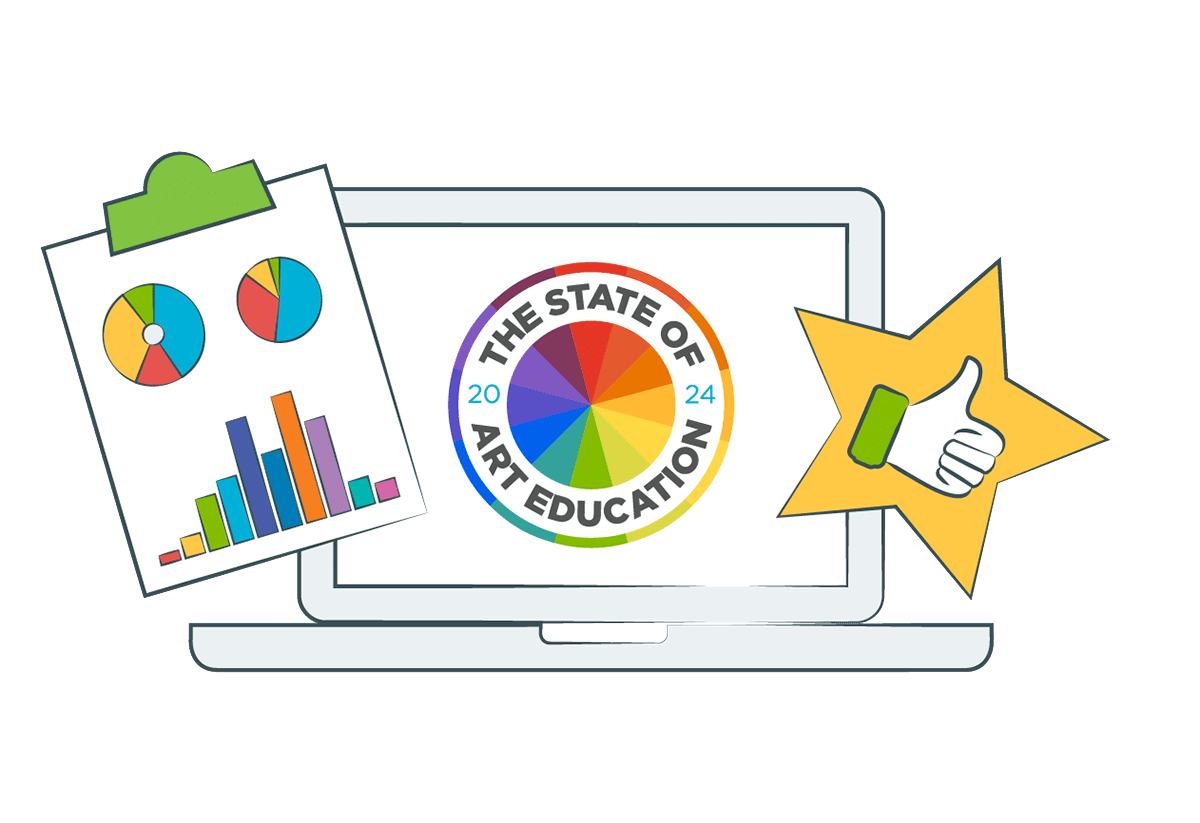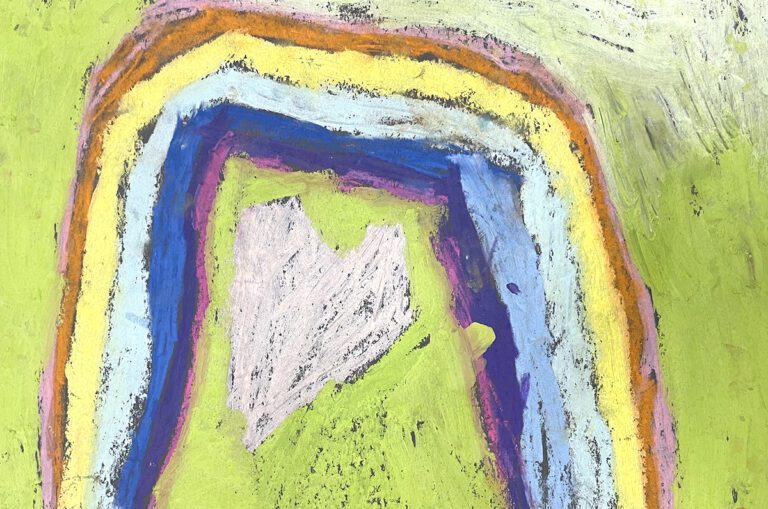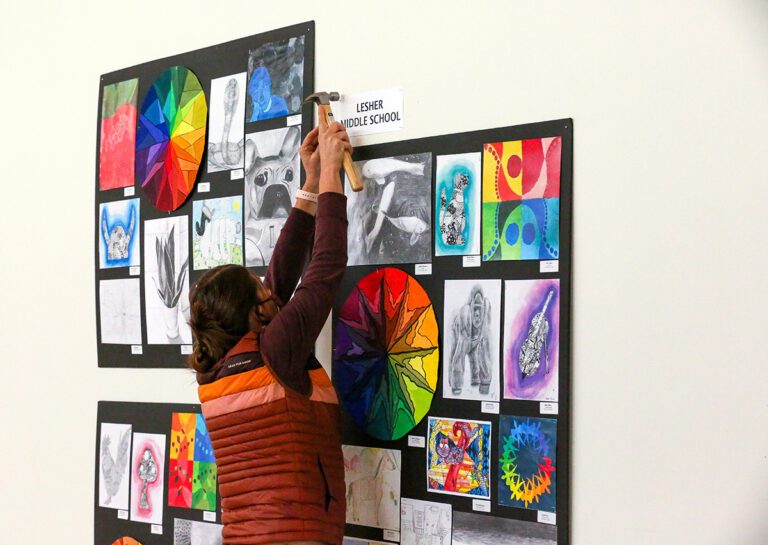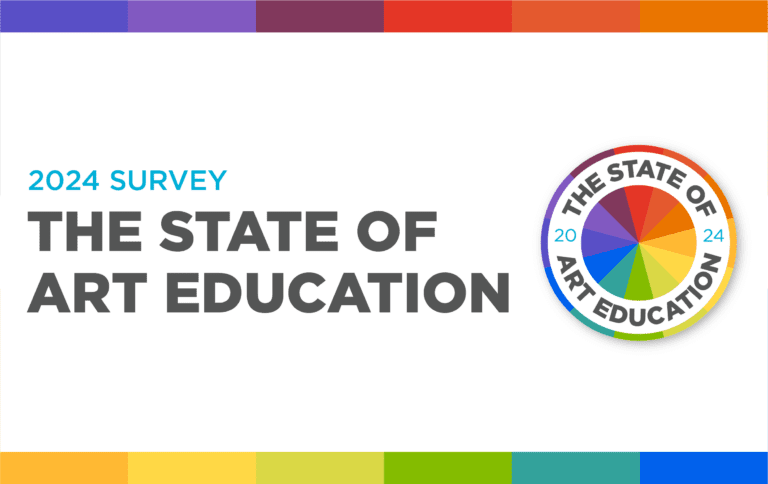Developing and running a successful art program takes time, energy, and creativity. It also takes advocacy. One important area to focus on when growing a program is data. Using data to tell a compelling story is a surefire way to get the attention of decision-makers in your district. Learning how to deliver a confident, data-driven pitch will help garner respect for your art program and advocate for your budding artists.
Take a look at how you can use data to advocate for your program by sharing the biggest findings from the 2024 State of Art Education survey. Let’s dig into the data!
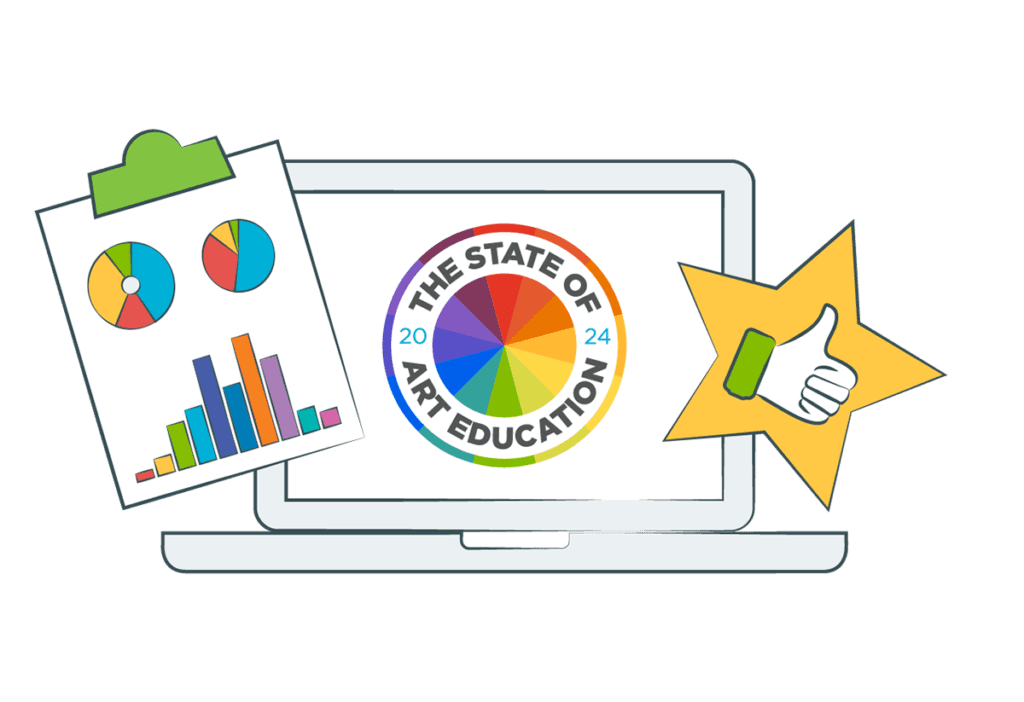
What is data?
Before we get started, let’s discuss what data is and the different types. Understanding this will help you determine what data will best support your request. Data is factual information used as a foundation for making decisions or having a discussion. There are two main types of data: quantitative and qualitative.
Here are the two main types of data:
- Quantitative
Quantitative data is represented numerically and answers questions such as, “how many,” “how much,” and “how often.” Examples include attendance, course enrollment numbers, artwork quantities, and how many people attended your huge end-of-year art show. - Qualitative
Qualitative data is represented in words and images. Examples include written student reflections, video clips of students actively engaged in artmaking, and a student portfolio of a deeply conceptual body of work.
One fabulous way to find quantitative data is the State of Art Education Survey! Each year, we ask thousands of art teachers to answer questions about a variety of topics in art education. We compile the results into a handy resource with easy-to-read colorful graphics. Download and read the results to see how the data from the survey may help you advocate for your needs.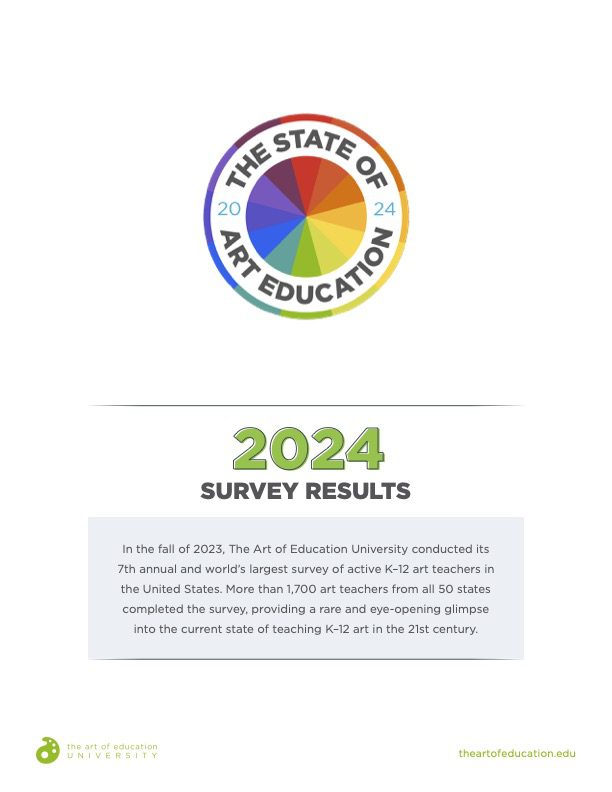
For a deeper dive into the data, grab the results from previous years here:
Let’s look at four examples of how an art teacher may use the State of Art Education survey data as an advocacy tool.
Use the scenarios below as inspiration to craft your own pitch. Navigate the process step-by-step and start by identifying a need, your specific ask, and the audience. Then, see if you can use the survey data to help you tell a compelling story!
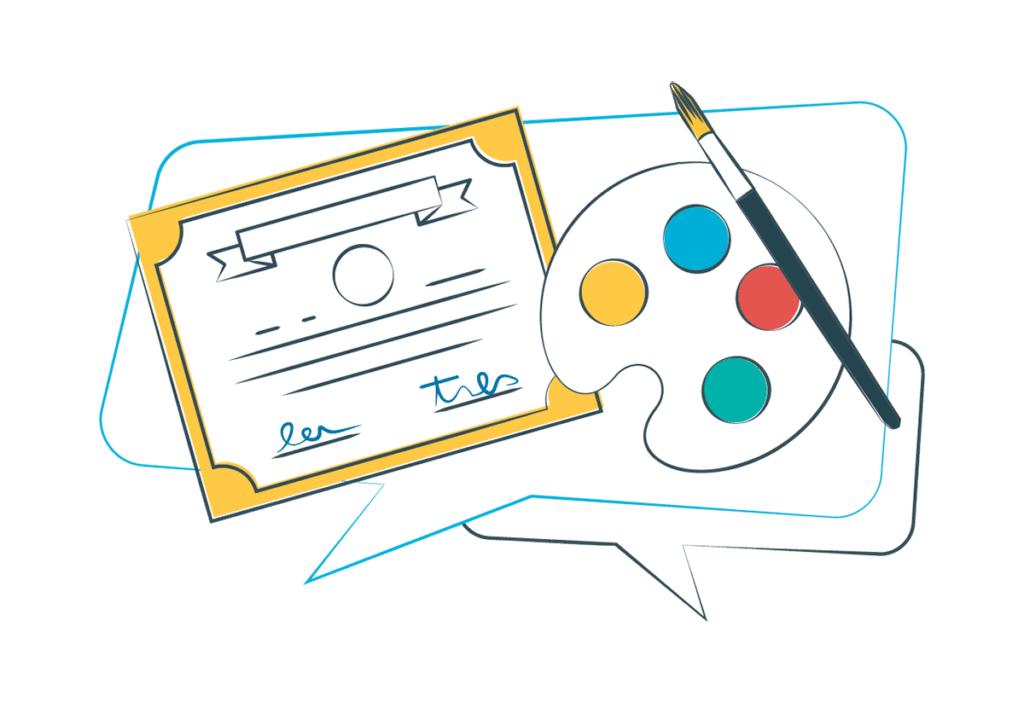
1. Request art-specific professional development.
According to the State of Art Education survey data, over the past several years, more than 60% of art teachers shared that they feel supported by their administrators. However, the data showed that art teachers wish they had access to better professional development (PD) options. Half of art teachers say their professional development needs improvement and it’s not personalized or relevant. Administrators are very busy and may not have the time to seek out subject-specific PD for all teachers in the building. When you advocate for your needs and provide specific solutions, it makes it easier for an administrator to say “yes” to your request. They need your help!
Let’s say you want to advocate for better professional development to your district art supervisor. Schedule 5-10 minutes to stop by their office and bring a few handouts to supplement your discussion. Try a pitch like the one below and don’t forget to follow up with a thank you note!
Hi! I’m Lindsey McGinnis, the high school art teacher at Laurel. As a teacher, I strive to have a growth mindset because I know there is always something new to learn to bring to my students! I need art-specific professional development so I can fully participate in PD exercises and walk away with tangible strategies and ideas that will work in my art room. The Art of Education University provides two online professional development opportunities for districts like ours. PRO Learning is an on-demand PD platform designed for K-12 art teachers with hands-on tutorial videos and teacher-facing resources. It will be really helpful to have for our six PD days that are already on the calendar! The NOW Conference is the largest online conference held twice a year for K-12 art teachers. They have amazing speakers such as Devon Rodriguez, the most followed visual artist in the world! This week, will you take a look at what they offer and see if it will fit into the budget for next school year?

2. Promote digital art.
Drawing and painting are our forte as art teachers. Unfortunately, in the State of Art Education survey data, only 24% of art teachers listed digital art as the medium they are most comfortable with and more than half of art teachers want to learn more about it. This is something we need to address since we are teaching 21st-century skills in a digital world! A great place to start is to enroll in the Studio: Graphic Design course to learn foundational design skills and how to teach digital art through real-world problems. Ask for this course using a process similar to the example above. Once you’re feeling more confident with your digital art skills, it’s time to bring the experience to your students!
Your students are curious about exploring digital art, so you need a class set of iPads. You started a fundraiser but would like the PTA’s help. Ask to speak at the next meeting and deliver a pitch like the one below. Show your appreciation by having your students create thank you cards on the new iPads!
Hi! I’m Lindsey McGinnis and I’ve been teaching art here for the past 12 years. I’m excited to be a part of the PTA and all of the wonderful things you do for our school! I just completed a digital art graduate course and would love to bring the skills and experience to our students. According to the Pew Research Center, nearly all US teens use the internet every day (96%). The amount of teens who are online “almost constantly” has doubled in the past almost decade. To meet our students where they are and prepare them for life beyond the classroom, we need to hone their digital communication skills. In art, students can explore digital citizenship and visual communication with digital art! I already have an online fundraiser to get a class set of iPads. Will you share the link via your social platforms and monthly newsletter? Will you see if you have extra funds to fulfill this need?

3. Champion for more photography opportunities.
Whatever level you teach, both traditional darkroom and digital photography can be daunting. Just like with digital art, only 25% of art teachers in the State of Art Education survey data feel confident teaching this artform. The good news is, there are ways to bring photography principles into any grade level and classroom situation. The best places to start are to enroll in the Studio: Photography course or watch the Packs Digital Photography Basics or Creative Approaches to Beginning Photography in PRO Learning. Then, select a few ideas to capture your students’ attention!
One non-darkroom photography process is cyanotypes. You want to ask your local craft store to provide enough sun printing paper for all of your students. Swing by the store to speak to the manager with a pitch like the one below and bring a printout of the sun paper you’d like with the specific quantity and total cost of your ask.
Hi! I’m Lindsey McGinnis and I’m the high school art teacher at Laurel. Our school doesn’t have a darkroom but I’d love to bring some hands-on, screen-free photography processes to our students. I see you carry sun printing paper; would you be willing to donate enough for 200 students? Our budget is $5 per student for the year, making this special paper very expensive. Our school bookkeeper can provide you with a donation receipt or letter, if needed. We’d love to display the final cyanotypes on the empty bulletin board by the front door to help draw students and their families into your store.

4. Ask for ready student-facing resources.
We often think, “If only there were more hours in the day, I could…” Although art teachers are getting more planning time (more than half of art teachers have 45 minutes or more per day), lack of time is still a challenge. Where does the time go? We know art teachers have many responsibilities and roles, but according to the State of Art Education survey data, 81% spend the time creating their own resources. Imagine if you could have classroom-ready resources for your students! In fact, 73% of you believed having classroom-ready resources would allow you to be a better art teacher. Let’s show you how to get access to a vast archive of student-facing resources!
You’d love FLEX Curriculum and plan to ask your principal for it. Stop by your principal’s office and provide samples of FLEX for them to flip through while you give a pitch similar to the one below. Download the Elements and Principles guides and a complimentary artist bio. Share the What is Collage? preview video and how you already use these items in your classroom!
Hi! I’d love to chat with you about my recent observation and how I use student-facing resources in my art room. I received a high score for the planning and preparation I put into my lessons. It took me two hours to create the resources for this one lesson/observation and it took me eight hours total to create all of the resources I needed for all of my classes for that week. This is four more hours than my planning time. I am proud of the handouts and presentations I create; however, spending this much time on them is unsustainable. I would love access to a bank of high-quality student-facing resources I can pull from to allow more time to communicate with parents, help with other school initiatives, and grade assignments. FLEX Curriculum is a standards-aligned K-12 art curriculum with step-by-step lesson plans, customizable rubrics and assessments, artist bios, project photos, videos, and more. This week, will you take a few minutes to look at FLEX and check to see if the school has the budget to provide these resources for our students?
You may love making art with students in your cozy art room. However, if you want to grow your art program and provide more opportunities for you and your students, you will need to step outside of your comfort zone—and your cozy art room. This step may look like diving into data and learning how to make and give a confident pitch to get a need fulfilled. We did the hard work and outlined six steps for you to take, compiled data from 1,700+ art teachers to use in your request, and gave four examples you can easily customize. Now that you’re set to solve any problem that may come your way, get ready for your confidence and art program to soar!
Are you a data lover or hater?
What is something you or your program need to grow?
Magazine articles and podcasts are opinions of professional education contributors and do not necessarily represent the position of the Art of Education University (AOEU) or its academic offerings. Contributors use terms in the way they are most often talked about in the scope of their educational experiences.
